Deep Dive Into Subsystems
1.0 Introduction
Functions within an organization are always interconnected and at the same time interdependent. However, complex situations would always call for a systematic approach as many leaders and managers embrace linear thinking, short-term focus, and systems thinking. In this context, the discussion would expound on the concept of understanding systems by selecting an industry, establish subsystems, and explore in other concepts that include CATWOE (Customer, Actors, Transformation, Worldview, Owner, and Environment) among others, which is crucial for business dissertation help.
1.1 Selection of the industry
Among all industries in the economy, the automobile industry is quite captivating. It is even good to have a feeling that one made or developed luxurious cars, which create or provide comfort to the people. The industry entails a range of organizations and companies that are engaged in designing, developing, manufacturing, marketing, as well as selling cars. It has consistently been one of the largest economic sectors in the world reaping substantial revenue from different segments around the globe (Rawlinson and Wells 2016). In United Kingdom, the industry is best known for the premium as well as sports car marques that comprises of Caterham Cars, Lagonda, Lotus, Morgan, Jaguar, Daimler and Aston Martin among many others. Commercial manufacturers in UK include IBC Vehicles, Ford, and Alexander Dennis among others. UK automotive manufacturers have been experiencing a turnover of around £52.5 billion. The export value stood at £26.6 billion after selling over 1.45 million passenger vehicles as well as 203000 commercial vehicles. Therefore, the car industry is a lucrative business that is pumping more revenue in the company as many players get attracted to its performance. I chose the automotive industry because I have a passion for cars (De Kleine et al. 2017). I always take much of my time studying and researching the make of the latest models in the market. Besides, making comparisons between the trending cars has drawn me towards the new realization that the industry is one area a person can work in and learn the skill that will never fade in the lifetime. Therefore, the passion for cars has turned my desires to an urge that keeps directing me to work in the sector.

1.2 Real World Organization
The automotive industry is usually flooded with countless models that can sometimes be confusing to some of the clients. However, I choose Ford Motors UK because the brand facilitates quality products in the market (De Kleine et al. 2017). There are several reasons as to why I chose Ford over the rest of the companies. First, I grew up knowing that Ford was my father’s favourite brand and he would always have a car from the company for us. Secondly, Ford Motor Company has always been a lifestyle to me. Therefore, I developed a positive attitude towards the brand because of the service it has delivered to me and the family as a whole. Lastly, apart from being a multinational, its existence in Brentwood, Essex means that the company is accessible and therefore provide a one-on-one experience. Ford is known to be an American multinational automaker that has its headquarters anchored in Dearborn, Michigan (Ford 2018). It sells the automobiles as well as commercial vehicles under the brand name Ford. Some of the luxurious cars manufactured by Ford include the Lincoln brand among others. The company further owns the SUV manufacturer Troller, Jiangling Motors and Aston Martin in United Kingdom. Its presence in Essex seemingly encouraged consumption of the brand across the entire UK. It currently provides most of the services through the website
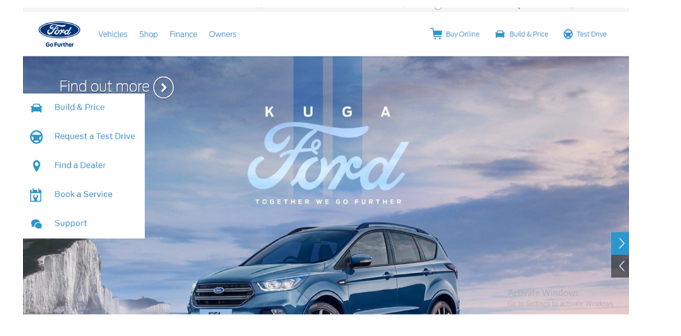
Question 2
2.1 Subsystems
Physical subsystems at Ford Motor Company appear in different categories, which are integrated to yield quality cars at the end of process. Each of the subsystem is attached to the subsystem controller. The first subsystem in Ford is the accessory subsystem, which constitutes components attached to the front-end accessory drive within the engine (Tiller et al. 2003). Some of the components include the AC compressor and alternator. The second subsystem is the electrical subsystem, which deals with electrical components within a vehicle. The third component is the powerplant subsystem, which represents the source of the motive torque (Araki and Moriya 2003). The subsystem yield internal combustion. The fourth subsystem is the transmission subsystem, which is geared towards delivering power to the wheels from the powerplant. The fifth subsystem is the driveline, which models the distribution of the transmission output torque to every wheel. The brake system comes forth and the chassis system constitutes the body, wheels, suspension, and frame of the vehicle. This section will work more on the chassis and transmission subsystem.
Looking for further insights on A Playbook for Ministry and Discipleship? Click here.
The transmission system’s main objective is to gear power to the wheels from the powerplant. Therefore, the transmission system is closely connected to the powerplant and the driveline. Any of the hydraulic function is closely attached to the transmission subsystem (Gatignon et al. 2016).
Key stakeholders in this subsystem include the design engineers, mechanical engineers, subsystem supervisors, and the division’s management. This is largely a technical team that has the skills and knowledge of designing and integrating the subsystem with the rest of the vehicle.
The transmission has many inputs and outputs. Some of the input parameters include the throttle position sensor, vehicle speed sensor, transmission fluid, kick down switch, wheel speed sensor, turbine speed sensor, switches, and the traction control system among others (Tiller et al. 2003). The output parameters include the shift lock, output to the ECU, torque, torque converter clutch and the pressure control solenoids.
Ford started facing problems with the Powershift and never served as the hydraulic automatic transmission. Consumers in America and Europe simply want the transmission to behave like the hydraulic automatics.
There are so many transformations within the transmission subsystem. The single stage gear either reduces or increases the speed while torque converters serve as the mechanism for speed-torque transformation (Tiller et al. 2003). Power transformations are also noted in the diesel-electric transmission.
As mentioned before, the transmission subsystem borders the powerplant subsystem and the driveline subsystem. This means that the subsystem borders the two physically and functionally.
The subsystem is housed by the transmission control unit, which constitutes the sensors, circuits and data that served by the engine control unit.
The main objective of the chassis subsystem is to facilitate an architecture that provides sufficient flexibility, which can accommodate the complexity of the vehicle dynamics models.
They include the design team, mechanical engineers, and managers.
There no specific inputs and outputs from the chassis system. Key inputs include the key areas involved to construct the subsystem. These include the frames, design technique, steering system, body repair, wheel alignment, wheel bearings and system maintenance (Tiller et al. 2003). Key outputs include the flexibility and resilience of the system.
Feedback
Feedback depends on different tastes identified in the market. Therefore, feedback depends on a variety of factors including the demographics (Araki and Moriya 2003).
Insignificant transformations can be observed in a chassis subsystem. The steering wheel is the only part that witnesses transformations. However, the steering section will soon find its category.
It is somehow complicated to establish the system boundary for the chassis subsystem because it houses all the functions and physical systems mentioned before.
The chassis system is in itself the environment that meets the environmental need for other subsystems.
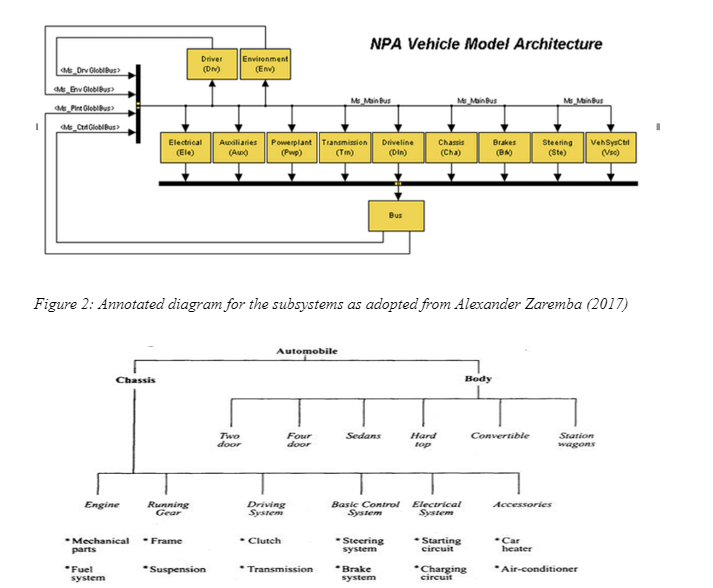
CATWOE and Root Definition as linked to subsystems
CATWOE is an acronym that stands for Customer, Actors, Transformation, Worldview, Owner, and Environment. For the Customer component, CATWOE should respond to who the system is operated for, the victim or the beneficiary behind the transformation system. On the Actors side, the framework looks at those who would be involved in conducting the activities that are envisaged in the relevant notional system (Pereira et al. 2015). The actors play a key role of transforming the inputs into significant outputs. T stands for the transformation process where the system adopts processes that convert the inputs into outputs. W stands for Weltanschauung, referred to as the worldview, which tows under the root definition. Worldview reflects the perception behind the root definition while putting the entire system in the wider context which highlights possible consequences of the entire system (Farag et al. 2016). O stands for the Owners, who constitute individuals who commission the system and the ones having formal power to stop the system from existing. E stands for the Environmental constraints, which include the ethical limits, financial constraints, regulations, resource limitations and terms of reference. All this amounts to the root definition, which is also the structured description of the entire system.
It is always a clear statement of the activities believed to take place in the organization or company under study. Root definition constitutes such elements like what, why and how. Both CATWOE and root definition apply to the transmission subsystem of the Ford Motor Company. First, the immediate customers of the transmission system include the drivers, passengers and even advertisers. Drivers are included because they serve as the operators of the system (Pereira et al. 2015). On the other hand, passengers are included because they have to feel the efficiency and the comfort the subsystem can provide while advertisers need to have the right information regarding the transmission system they go public. On the side of Actors, designers, mechanics, garage attenders and supervisors are the key player. Designers are engaged because they own the idea (Wilson and Van Haperen 2015). Mechanics are the ones to implement the design as supervisors ensure that the right guide is followed in meeting the end outcome. The transformation process constitutes insertion of the electricity-torque converters, which are engaged in converting one form of energy to another form. The worldview includes the perception of the drivers or motorists with regards to the efficiency of the subsystem (Georgiou 2015). This can be negative or positive depending on how accurate the subsystem is towards meeting the demand. The owner is the car owner who should be persuaded by the value or quality. Environmental constraints include monitoring requirements and the limits of the marketing budget.
On the side of root definition, Ford fosters quality designs developed by experts who understand the requirements of a better system that can meet the reasonable demand and desires of the clients, while ensuring reduced costs both in monitoring and engaging the customers. This confirms the aspect of optimization where lesser inputs are used in maximizing the output. However, Ford may have no issues with extra investments (Georgiou 2015). However, it is always considered profitable to ensure that costs are reduced by adopting most effective techniques that can yield best outcomes.
Rich Pictures
Rich picture means a drawing of the situation that reflects the main elements as well as the relationships that are regarded in any intervention while creating an improvement. Rich picture constitutes symbols, icons, symbols, text and pictures that are all used in illustrating the situation graphically (Cristancho et al. 2015). It is referred to as rich picture because it reflects the complexity and richness of a given situation. Developing rich picture for such a company like Ford helps in understanding the complexity. Rich picture builds on the people’s intuitive consciousness, which facilitates communication through symbols and impressions than it would have been if the same communication were done through use of words (Cristancho et al. 2015). Rich picture helps in identifying connections and relationships while noting down the themes and key areas that need more attention. For Ford Company, the rich picture looks at so many items that range all the way from booked orders to the time it reaches the market and the feedbacks that are involved. The following picture is as shown below representing Ford operations.

A system map is essentially a list of components that reflect the graphical representation of the structure to be adopted by the organization under study. The system map essentially shows components as well as the boundary of the system and the environment as well. The main objective of the system map entails developing a structure for the subsystems and the way to communicate to each. System maps are parent to the stage analysis by establishing the structural elements, experiment with the boundaries, level of interest and type of designs to be adopted (Nelson and Current 2018). Some of the designers understand it as the visual description of the technical organization that bears different actors, mutual links, and flow of materials, information, and energy among other things. Ford takes the following map or maps.
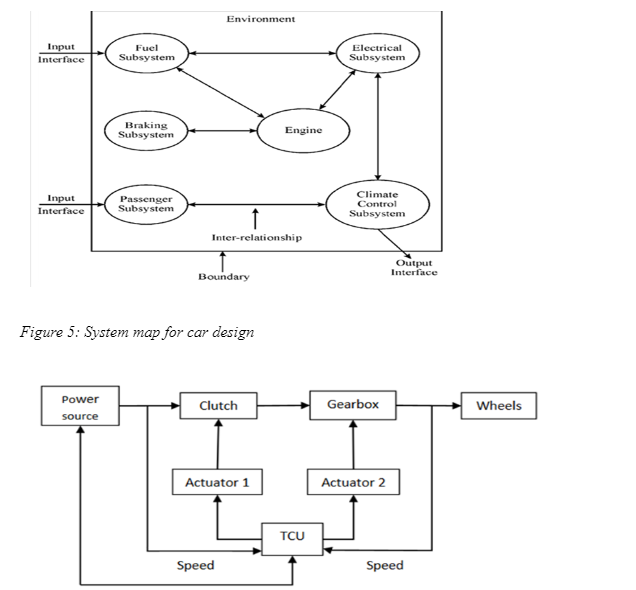
Sequence diagrams are common among the automakers, including Ford Motor Company. Activity sequence diagrams are simply diagrams that display the way through which processes are executed. In other words, the activity sequence diagrams establish the order of the key operations as well as parameters. The diagram would depict operational workflows, shows the interactions between the subsystems and different components in the system (Felderer and Herrmann 2015). Besides, the system finds the best use of dynamic modelling, which is easier to understand for both the readers and developers. For Ford Company, the sequence diagrams comply with the concept of “new mobility” which observes megatrends in the market.

A mind map is simply a diagram that is essentially applied in organizing information visually. It is simply a hierarchy that establishes relationships across the pieces and often created based on or around a concept. Most of the mind maps are drawn by hand. Mind mapping yields the effective way of extracting information from a rational and logical process. Mind maps have different elements in common in terms of note making and note taking (Serrat 2017). Mind maps are parent to the natural organizational structure, which radiates from the significant centre before making use of lines, colour, images, words, and symbols. One simple means of understanding mind maps is by drawing comparisons with a city. Mind mapping for Ford Motor Company has attracted perceptions and structures that have long-term impact. Ford extracts most of the information from consumers before it can be extended to the design (Serrat 2017). Mind mapping for Ford Motor Company has closely been associated to concept mapping where methodologies, beliefs, ideas, and thoughts are adopted. Mind maps, therefore, houses key concepts and product perception. Concerning car development, Ford shares ideas on quality, model perception, and car design.
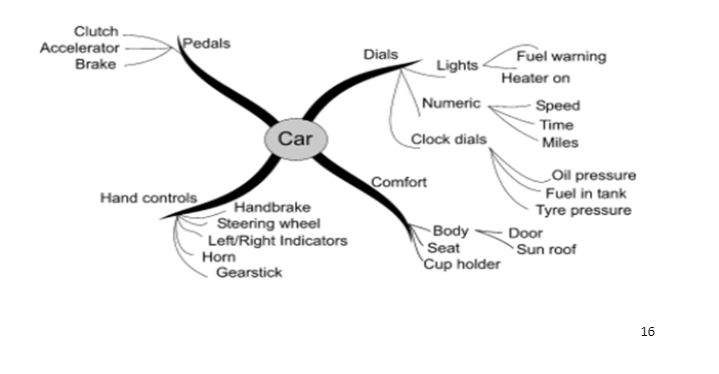
There has always been a consistent debate when discussing differences between the soft systems and the hard systems. By definition, soft systems are those ones whose boundaries change and the objectives conflict making it difficult to predict the outcome. On the other hand, hard systems are the ones whose objectives and goals are clearly defined as well as their outcomes are easily predictable. This means that their boundaries do not vary and are consistent. Based on the operations and functions in the automobile industry, soft systems approach assumes that organizational problems are poorly defined as well as messy (Powell 2018). In addition, the methodology assumes that stakeholders can easily interpret problems in different dimensions while keeping human factors. Outcomes of the system are learning and better understanding instead of establishing a solution. Therefore, soft systems have a loose framework of tools that can be used at discretion of an analyst who might have focused on improvements of the organization (Song et al. 2016). Hard systems make use of system analysis, system engineering, structured methods, and operations research. The approach always has a well-defined problem that need to be solved while fronting technical factors. Therefore, rigid techniques as well as procedures can lead to unambiguous solutions defined through data processing and computer implementations.
The comprehensive application of the soft systems methodology in the automobile industry, and specifically to Ford Motor Company, includes justification of the investments in key and strategic technologies. This constitutes operationalization of the work process while establishing the decision support system. An analytic hierarchy process is always tagged to ensure specific requirements are prioritized with minor modifications done on the original system designs. Secondly, SSM is applied in establishing both the creative as well as innovative characteristics that can lead to a sense making device. This is confirmed through rich pictures which offer a better medium for expressing relationships while thinking about the car design. The SSM intervention yields creative ideas that can facilitate learning through the system while thinking on how to improve it.
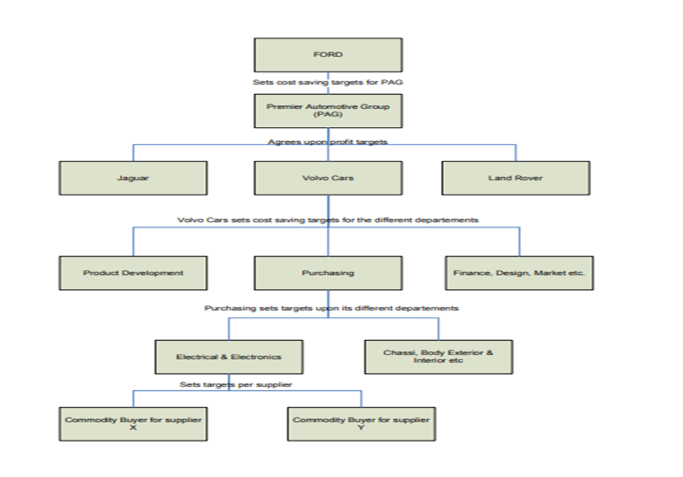
Hard systems are equally important in the automobile industry especially in the processes that entail detailed designs and call for more attention. Hard systems approach narrows down detailed design, installation, and development that should be integrated in the proposed operations. The approach is systematic and comprises of data collection on measures of performance while facilitating the desirable change in the system (Dshemuchadse et al. 2017). The hard systems are also applied in establishing procedures for developing the subsystems. While the transmission subsystem is full of converters, it still requires communication from the driveline as to whether the car has to make a stop or not. Such a scenario compels the approach to define the problem, analyse the situation, identify objectives, establish the routes to the objectives, measure the performance of the system and develop as well as evaluate same options. The cyclic process is effective in constructing procedures that can be duplicated for another process that aim at developing the same model of a car.
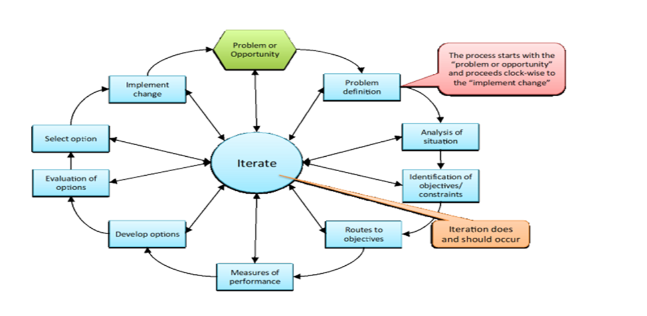

References
- Rawlinson, M. and Wells, P., 2016. The new European automobile industry. Springer.
- De Kleine, R.D., Anderson, J.E., Kim, H.C. and Wallington, T.J., 2017. Life cycle assessment is the most relevant framework to evaluate biofuel greenhouse gas burdens. Biofuels, Bioproducts and Biorefining, 11(3), pp.407-416.
- Tiller, M., Bowles, P. and Dempsey, M., 2003, November. Development of a vehicle model architecture in Modelica. In Paper presented at the 3rd International Modelica Conference.
- Araki, H. and Moriya, H., 2003. Joint extension of states of subsystems for a CAR system. Communications in mathematical physics, 237(1-2), pp.105-122.
- Gatignon, H., Gotteland, D. and Haon, C., 2016. Assessing Innovations from the Technology Perspective. In Making Innovation Last: Volume 1 (pp. 19-51). Palgrave Macmillan, London.
- Pereira, T.F., Montevechi, J.A.B., Miranda, R.D.C. and Friend, J.D., 2015. Integrating soft systems methodology to aid simulation conceptual modeling. International Transactions in Operational Research, 22(2), pp.265-285.
- Farag, F., McDermott, P. and Huelin, C., 2016, September. The development of an activity zone conceptual framework to improve social value implementation in construction projects using human activity systems. In Proceedings 32nd Annual ARCOM Conference, 5–7 September 2016, Manchester UK (pp. 975-984). Association of Researchers in Construction Management.
- Georgiou, I., 2015. Unravelling soft systems methodology. International Journal of Economics and Business Research, 9(4), pp.415-436.
- Wilson, B. and Van Haperen, K., 2015. Soft systems thinking, methodology and the management of change. Macmillan International Higher Education.
- Cristancho, S., Bidinosti, S., Lingard, L., Novick, R., Ott, M. and Forbes, T., 2015. Seeing in different ways: introducing “rich pictures” in the study of expert judgment. Qualitative health research, 25(5), pp.713-725.
- Nelson, S.D. and Current, P., 2018. Modular Architecture Propulsion System (MAPS™). In 2018 Joint Propulsion Conference (p. 4704).
- Felderer, M. and Herrmann, A., 2015. Manual test case derivation from UML activity diagrams and state machines: A controlled experiment. Information and Software Technology, 61, pp.1-15.
- Serrat, O., 2017. Drawing mind maps. In Knowledge Solutions (pp. 605-607). Springer, Singapore.
- Powell, J., 2018. An introduction to systems theory: from hard to soft systems thinking in the management of complex organizations. In Complexity and Healthcare Organization (pp. 43-58). CRC Press.
- Song, S., Coit, D.W. and Feng, Q., 2016. Reliability analysis of multiple-component series systems subject to hard and soft failures with dependent shock effects. IIE Transactions, 48(8), pp.720-735.
- Dshemuchadse, J., Engel, M. and Glotzer, S.C., 2017. Universal crystal structures in hard and soft matter systems. In APS Meeting Abstracts.
- 24/7 Customer Support
- 100% Customer Satisfaction
- No Privacy Violation
- Quick Services
- Subject Experts



